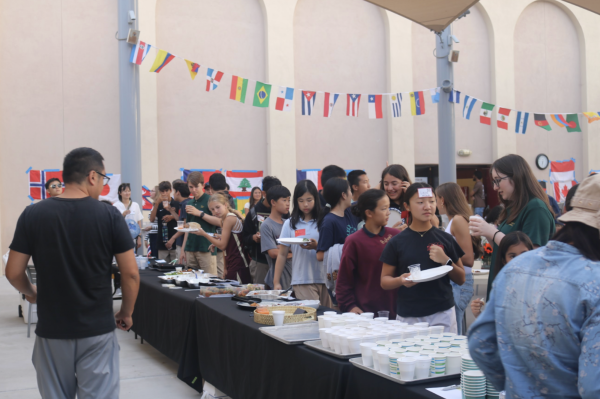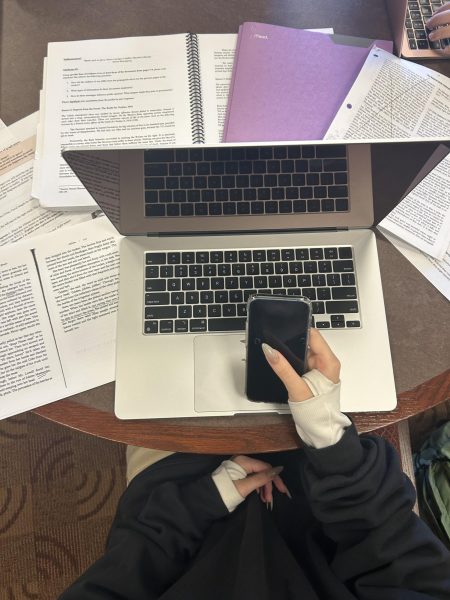What Do You Think? An Investigation Into the Harkness Curriculum
Walk into any math or physics classroom at Bishop’s and there’s a good chance the students are sitting around a table, trying to make sense of the material, while the teacher sits silently and nods. Phillips Exeter Academy defines this curriculum as “a collaborative approach to problem-solving and learning.” It is the Harkness method—a group of students having a discussion, and a teacher who focuses on guiding the angle of the discussion rather than dominating it. The question is: do students benefit in the long run?
At Bishop’s, both enriched and regular math and physics classes use this strategy, but according to Math Department Chair, Mr. Noble Kime, enriched classes tend to have more discussion than others. Regular classes have a stronger focus on instruction and blend different curriculums in order to appeal to more learning styles.
This method of high school students teaching themselves focuses more on learning how to learn—learning how to work collaboratively, discuss, and share with peers. It’s about preparing for the future rather than grasping complex material. They figure out how to make distinctions, understand data, and draw conclusions. When learning advanced material, however, it’s hard to learn complicated formulas if they have to derive them themselves. Math teacher Ms. Dolores Williamson explained about her first year, “I realized that the enriched track was missing some fundamentals that my regular class was doing.” She supplemented the Exeter math book with extra worksheets.
Some students explained that they feel frustrated when teachers avoid their questions and try to get them to answer it themselves. Nadia Bitar (‘22) noted that “not everything can be learned through discussion with classmates.” However, for some students, the teach-yourself method does complement their learning type and works effectively. Mira Gowda (‘22) explained that she thought that the enriched track “isn’t necessarily better for smarter or more advanced students—just fast learners.”
“There is a reason why not all classes are enriched,” Science Department Chair Mr. Ben Heldt pointed out, because students in the enriched tracks need to be able to logically think their way through something they have never seen before, be creative, and grasp concepts quickly. Mr. Kime explained that he’s seen all different types of students be successful. However, he mentioned that the majority of students who do not struggle seem to share some common traits. “I find it’s much less effective with students who need to see a problem type many times before being able to understand and solve it, or who have little interest in math,” math teacher Mr. Michael Rybak commented. It’s crucial that enriched students grasp concepts immediately because the Exeter math books never contain two problems exactly alike. Each builds off the last, so missing the point of one question snowballs into more confusion later on. Often procedural students—those who prefer to take copious notes and do lots of practice problems—struggle more than intuitive learners and problem-solvers, but according to Mr. Kime, if they attend extra help they can thrive all the same.
Different teaching styles benefit different types of learners: auditory learners may benefit more from lecture format, a method that can bore and confuse visual learners. Mr. Kime dislikes the idea of a class with only lecture format. “I think some lecture is often needed, though it’s best in bits and pieces—but a class of all lecture is hard on the teachers, as well as the kids,” he said. However, lecturing can be an effective way to communicate information. Ms. Williamson illustrated this perspective, saying: “when I think of lecturing in my class, I think of a conversation between my students and me.”
A 2014 study by the University of Washington demonstrated a 55 percent increase in failure rates when STEM classrooms used traditional lecture format rather than more interactive methods of instruction, like group work. “We learn best those things which we have figured out for ourselves,” explained Mr. Kime. A recent study performed by Aloysius Wei Lun Koh, a teacher in the Department of Psychology at the National University of Singapore, called The Learning Practices of Teaching: a Retrieval Practice, reported huge improvements in comprehension and long-term retention when students explained concepts to each other rather than just doing practice problems.
However, many students will likely encounter lectures after Bishop’s. According to a study by the University of Nebraska – Lincoln, 55 percent of college STEM classes consist of traditional lecturing. If that is what students will be facing in the future, isn’t it important for them to see it now so that they will be prepared? The most effective strategy seems to be a mix of every type of curriculum—more in line with the non-enriched curriculum than the enriched one. Everyone learns differently, so a class only focused on one type of learning is only effective for a selection of students.

Clare Malhotra was born in Boston, Massachusetts and moved to La Jolla at age nine. She is currently a senior, and this is her third year on The Tower....







